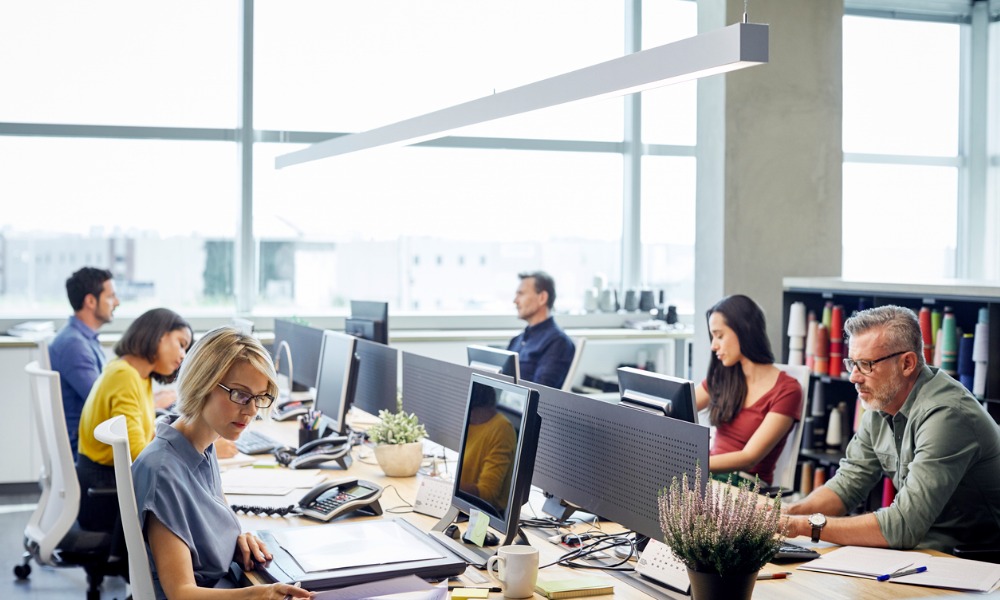'People tell us they feel the environment prioritises their wellbeing,' says workplace experience manager

A recent study found over 60% of employees across Asia Pacific believe their offices do not enable them to achieve their optimum performance.
Employees reported their office layouts, seating arrangements and meeting rooms are not conducive to workplace productivity.
However, the study by Cisco also reveals that organisations are making progress to transform their office spaces, with eight out of 10 employers having made changes post-pandemic and 81% planning to do so in the next two years.
Wellbeing prioritised through office environment
In Wellington, BNZ’s new office interiors have been designed not just to suit the changing needs of employees with regards to hybrid working, but with wellbeing at the forefront.
“People already working in the new building tell us they feel the environment prioritises their wellbeing,” says Kristina Martin, workplace experience manager at BNZ. “We haven’t just provided places for people to sit down and get their job done, we’ve provided spaces for people to be able to work on themselves and work well with their colleagues too.”
A gym, prayer room, rooftop terrace, and gaming room are some of the features located in the top floors of the prime real estate overlooking the capital city’s harbour and mountains. What’s more, the flow of the spaces inside has been created to encourage movement, with a goal of helping to keep employees healthy and perform at their best, she says.
After the 7.5 magnitude earthquake in 2016 that violently shook the city, BNZ’s previous building had been rendered unsafe, forcing teams to scatter across the Capital and lower north island in temporary locations.
A search ensued for the ideal location in which to regroup, with the organisation locking into plans for brand new offices near the Parliament Buildings, and then working in close collaboration with the landlord and main contractor, says Martin.
Hybrid style requires greater office flexibility too
“The interior fit out and everything that our customers and colleagues interact with was specifically designed and delivered by us,” she says, noting that the teams already ensconced in this new facility have given great feedback.
“We’ve got work points for around 700 but because we work in a hybrid style, there’ll be more people than that allocated to the building.”
Desking is mostly unallocated so that the building doesn’t have unused workstations – a more efficient use of money, space and energy, says Martin.
“We couldn’t just move workstations without providing support, so we have a lot of different types of focus and meeting rooms. Some of these are open meeting spaces, some are creative studios or places to connect with people and collaborate.
Increased demand for quiet space
“What we're noticing, with more and more with people coming back into the office, is that we've had to increase our provision of spaces to focus and to have quiet and privacy. I think people were used to being in their own home offices for so long that dealing with the background hum of an open plan office is taking adjustment or get used to, so in this building, we really turned the dial up with those types of spaces.”
The many different types of workspaces required have been created through a combination of built environments and furniture-based solutions which provide flexibility but also privacy, such as phone pods, she says.
“With the furniture-based solutions, it's really easy and economical to change and evolve as our needs as a business change.”
Stakeholder feedback
To ascertain what employees wanted, there was an extensive stakeholder engagement process, says Martin.
“We talked to subject matter experts within the organisation, like those in technology, people and culture, and our diversity and inclusion group. Then we also got right down to grassroots level, in that each team or business unit occupying each floor has stakeholder representatives that would represent their colleagues in fortnightly and monthly concept ideas sessions. Through those we looked at how they work, what they need in order to perform at their best, and what spaces would help achieve that.”
An important consideration as far as those designing the layout was concerned was for the top floors, 12 and 13 – which have views of the harbour and mountains – to be accessible to everyone, with DE&I also at the forefront, including accessibility aspects.
“We decided early on not to allocate those top floors to any specific teams or people,” says Martin. “We wanted to keep these as dedicated community floors.”
Spaces for activity and wellbeing
It’s on these prime floors that the cardio gym and studio space for exercise classes are located, as well as parents’ room and prayer room.
The flow of spaces has been created for maximum activity and movement, such as setting kitchenettes away from desk spaces so that people need to move away from their workstations to fetch a drink, she says.
The internal staircase is central throughout most of the building and meant to be an inviting space with artworks incorporating elements of te ao Māori.
“They’re a really beautiful feature and encourages movement, rather than elevator use, which is also a bonus in terms of energy saving too, so it’s a win-win,” says Martin.
“We have a responsibility as a large corporate to provide workplaces that allow people to perform at their best and contribute positively to people’s wellbeing.”








